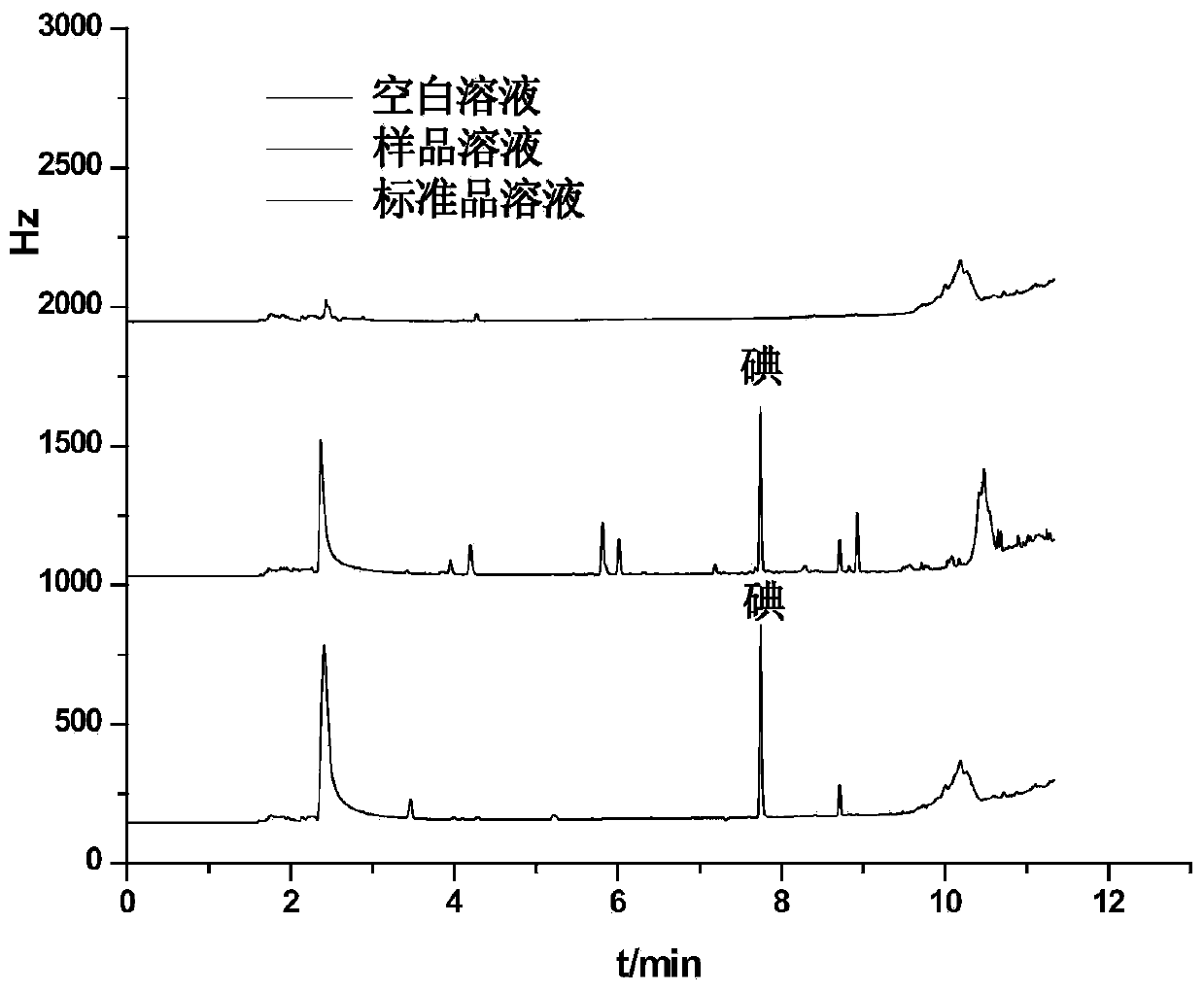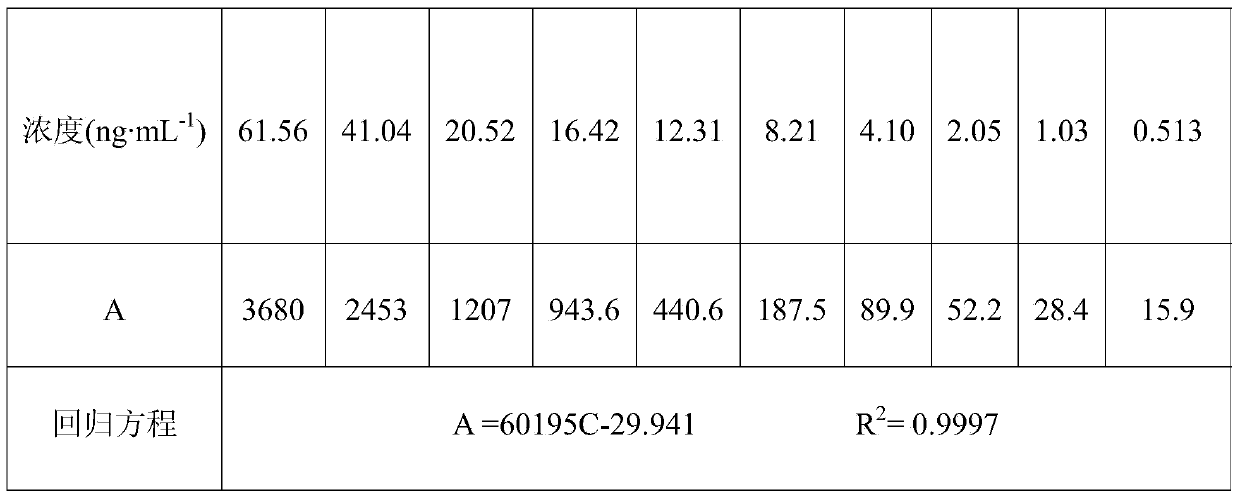Gas chromatography method for determining content of iodine in food
A gas chromatographic analysis and gas chromatographic technology, applied in the direction of measuring devices, analysis materials, material separation, etc., can solve the problems of low detection limit in the scope of application, inability to extract iodine, and only application The recovery rate and the effect of promoting the oxidative decomposition of organic matter
- Summary
- Abstract
- Description
- Claims
- Application Information
AI Technical Summary
Problems solved by technology
Method used
Image
Examples
Embodiment 1
[0023] Embodiment 1, measure the iodine content in 44 kinds of foods.
[0024] 1. Instruments, reagents and instrument working conditions
[0025] (1) Instrument
[0026] Agilent6890N gas chromatograph equipped with electron capture detector (Agilent Corporation, USA); high-temperature energy-saving electric furnace HY-1000°C (Luoyang Hengyu Experimental Electric Furnace Factory); Shengpu experimental electric heating plate HT-300 (China Guangzhou Analysis and Testing Center); ultrasonic Cleaning instrument (Shanghai Luxi Analytical Instrument Co., Ltd.); centrifuge TDZ5-WS (Hunan Sete Xiangyi Technology Co., Ltd.); micro-vortex mixer XW-80A (Shanghai Luxi Analytical Instrument Co., Ltd.); Sartorius electronic balance BSA224S (Guangzhou Shenhua Experimental Instrument Equipment Co., Ltd.).
[0027] (2) Reagents
[0028] Potassium iodide (National Institute for the Identification of Pharmaceutical and Biological Products, 99.5%); Butanone (analytical grade, Tianjin Hongyan C...
Embodiment 2
[0046] Embodiment 2, repeatability and standard addition recovery test.
[0047]Take 6 parts of seaweed as samples, carry out pretreatment and gas chromatography analysis respectively, and calculate the recovery rate according to the added standard amount and the measured value, the average content of iodine in the seaweed is determined to be 11.05μg / g, and the RSD is 1.74%. The results show that the method Good repeatability. The recovery results are shown in Table 3. It can be seen from Table 3 that the average recovery of iodine in laver samples was 104.6%, and the RSD was 2.98%. The recovery rate of this method can meet the analytical requirements for determining iodine content in food, and is suitable for the analysis of iodine content in food.
[0048] Table 3 The results of the standard recovery experiment
[0049]
[0050]
PUM
 Login to View More
Login to View More Abstract
Description
Claims
Application Information
 Login to View More
Login to View More - R&D
- Intellectual Property
- Life Sciences
- Materials
- Tech Scout
- Unparalleled Data Quality
- Higher Quality Content
- 60% Fewer Hallucinations
Browse by: Latest US Patents, China's latest patents, Technical Efficacy Thesaurus, Application Domain, Technology Topic, Popular Technical Reports.
© 2025 PatSnap. All rights reserved.Legal|Privacy policy|Modern Slavery Act Transparency Statement|Sitemap|About US| Contact US: help@patsnap.com



